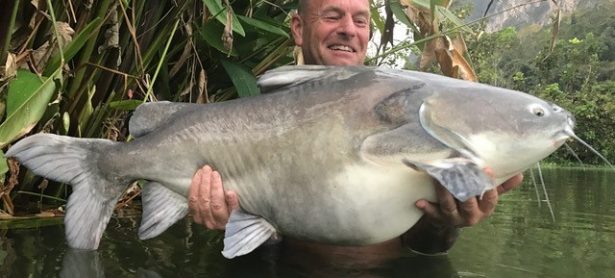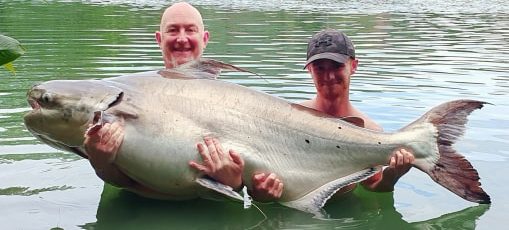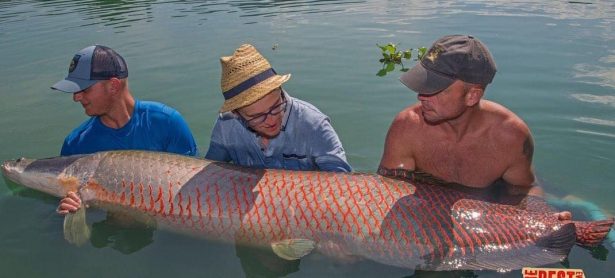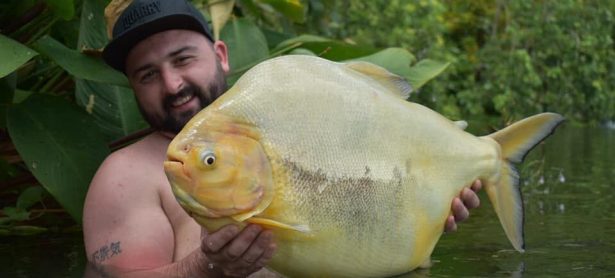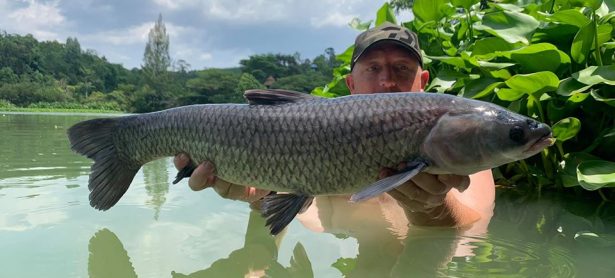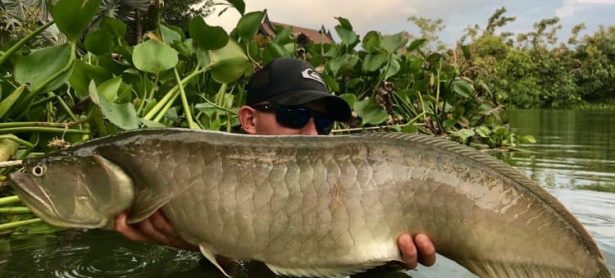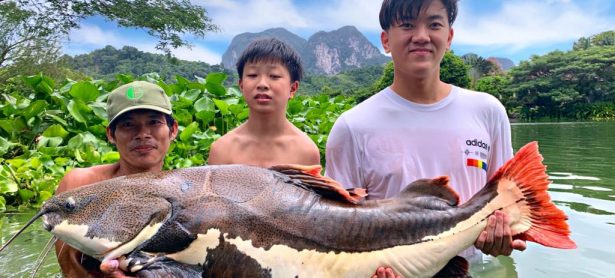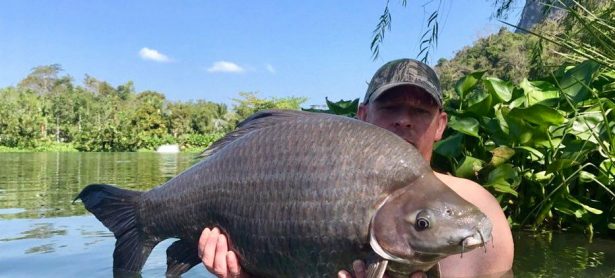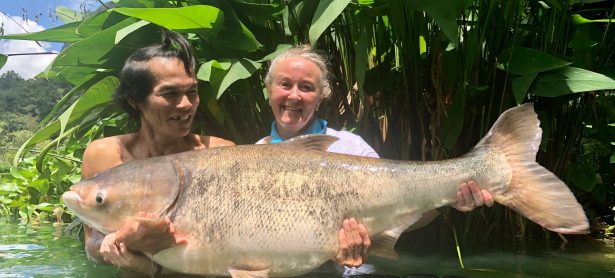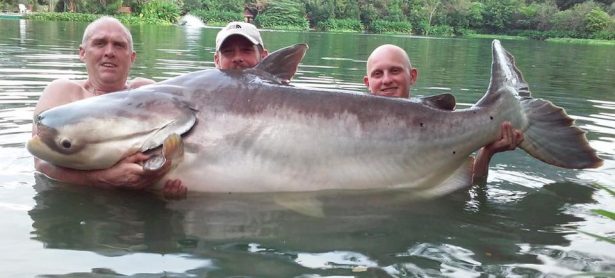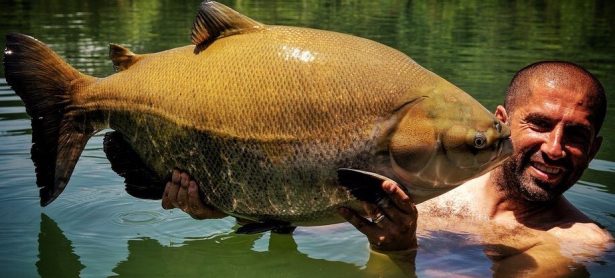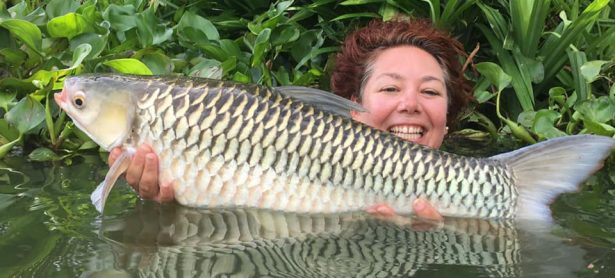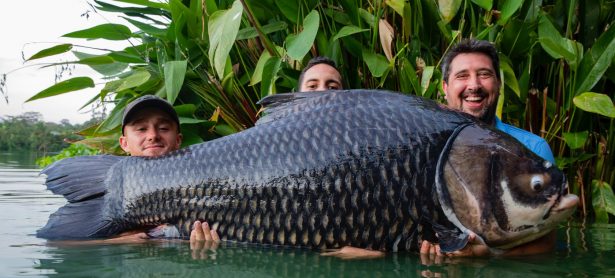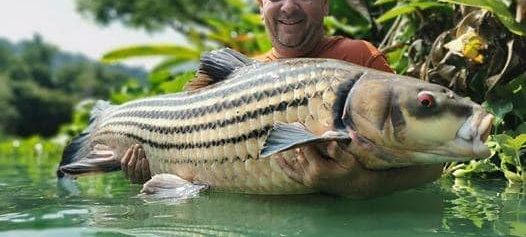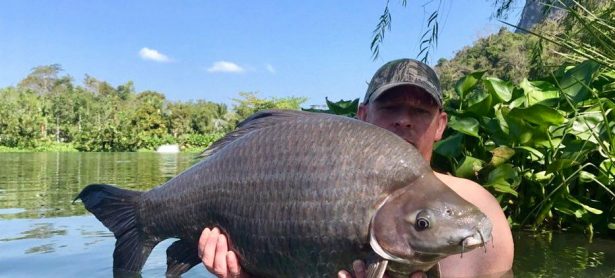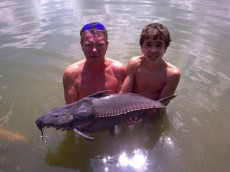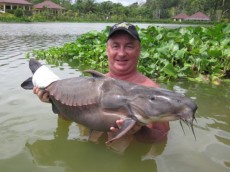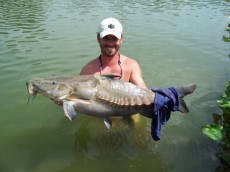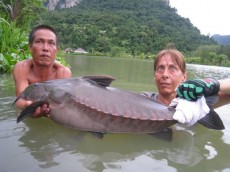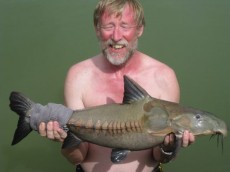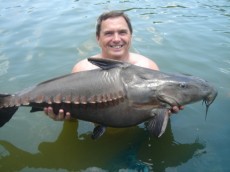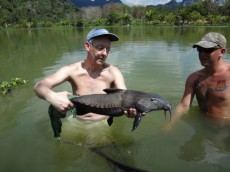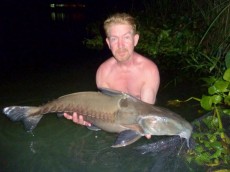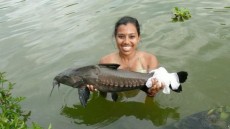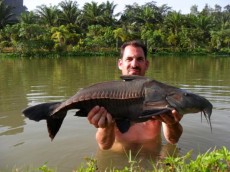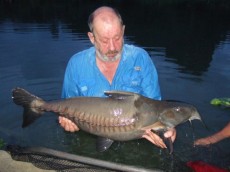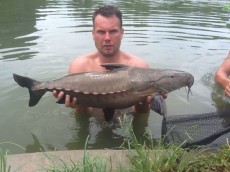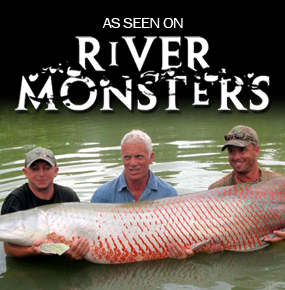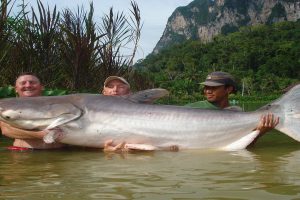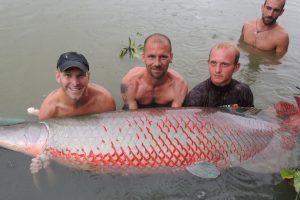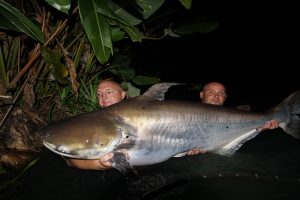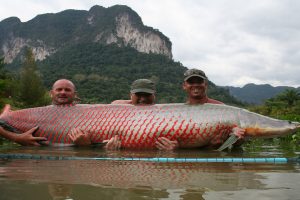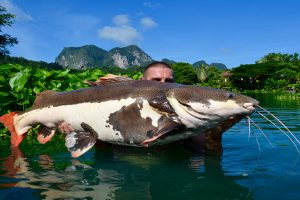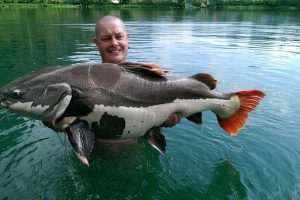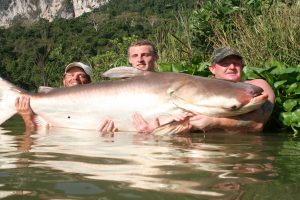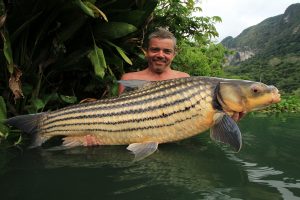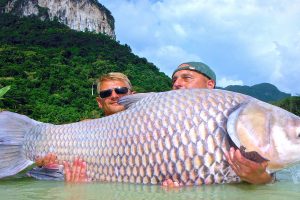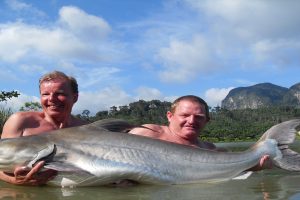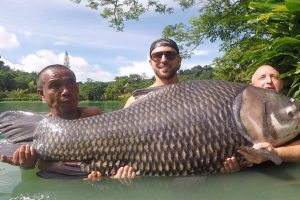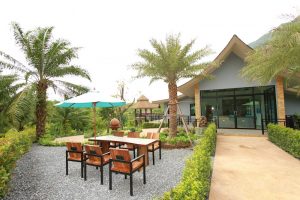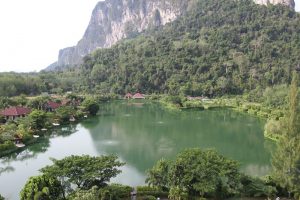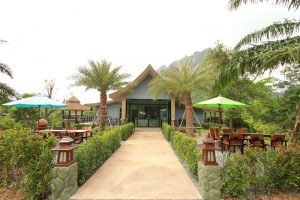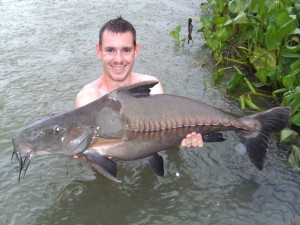 Name: Ripsaw catfish.
Name: Ripsaw catfish.
Common names: Niger, black talking catfish, plated catfish.
Species: Oxydoras niger.
Thai name: Pla niger doradidae.
Max length: 1.2m.
Max weight: 40kg (90lb).
IGFA record: 21.5kg (47lb 6oz)
Diet: Shrimp, worm, molluscs, insects, maize pellet and bread.
To fish for our niger catfish; try fishing bread flake or worms alongside the water hyacinth beds, especially in the corner silty areas where they sift through the silt scavenging amongst decaying water plants. These gentle members of the catfish family will be pushed off food by other fish, so avoid free offerings in large quantities, and fish the bait hard on the bottom under a float. When feeding these fish can be spotted by the clouds of bubbles made when they are sifting through the soft muddy areas of the lakebed. When hooked they try to get under the water hyacinth beds, which are floating weeds used as a filter system here, but just put your rod tip under the water and pressure them out into open water.
They will keep making repeated attempts to get back into the sanctuary of the weedbeds. Once you have landed one of these prehistoric fish, please heed our guide’s advice, as they have very sharp armored scales running down their lateral lines, plus sharp thorn-like hooks attached to their razor sharp scales. Do not attempt to pick these fish up without a glove or towel; they are docile for pictures and very hardy fish that, unlike other catfish, do not require an injection.
General facts on the niger catfish:
The niger is a member of the doradidae family; they are a dull black colour with a green tinge and large barbules on either side of their underslung mouths. They have armored scales running down the lateral line with sharp thorn-like hooks protruding off their scales. They are found throughout many of the major river systems of northern South America – Ecuador, Colombia, Venezuela, Guyana, Peru, Bolivia and Brazil. A population is also thought to exist in the Rio Orinoco.
Their natural habitat is muddy areas of slower moving water or lakes where they consume anything edible they find while sifting through the substrate. A large proportion of their diet is composed of crustaceans and the larval forms of various insects. The niger takes a long time to reach sexual maturity, and being slow to reproduce has placed them as code red on the endangered species list. They are thriving here in Thailand where they are a very popular aquarium fish; they scavenge the bottom of the tank, keeping it clean. They soon outgrow tanks, which is when commercial fisheries like ours purchase them. All the nigers at Gillhams were purchased from the aquarium trade.



